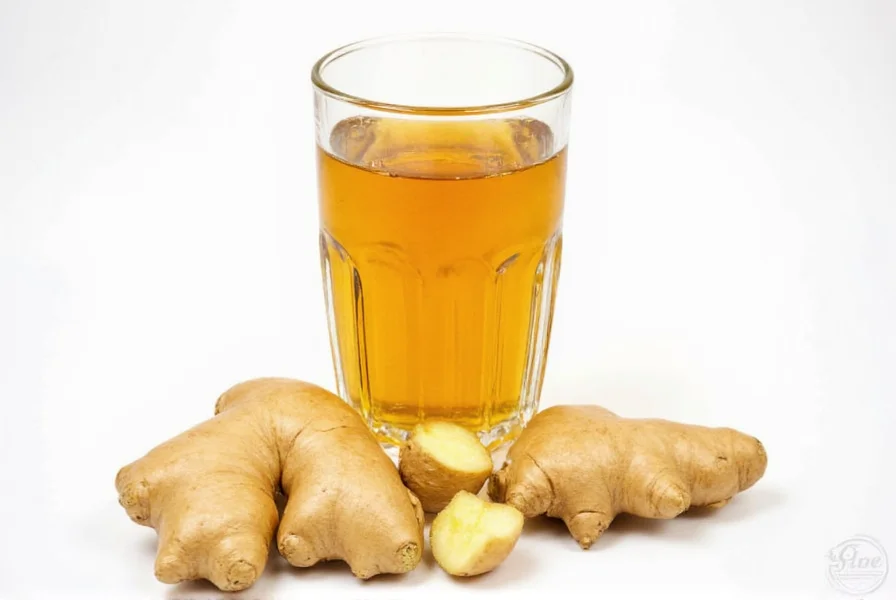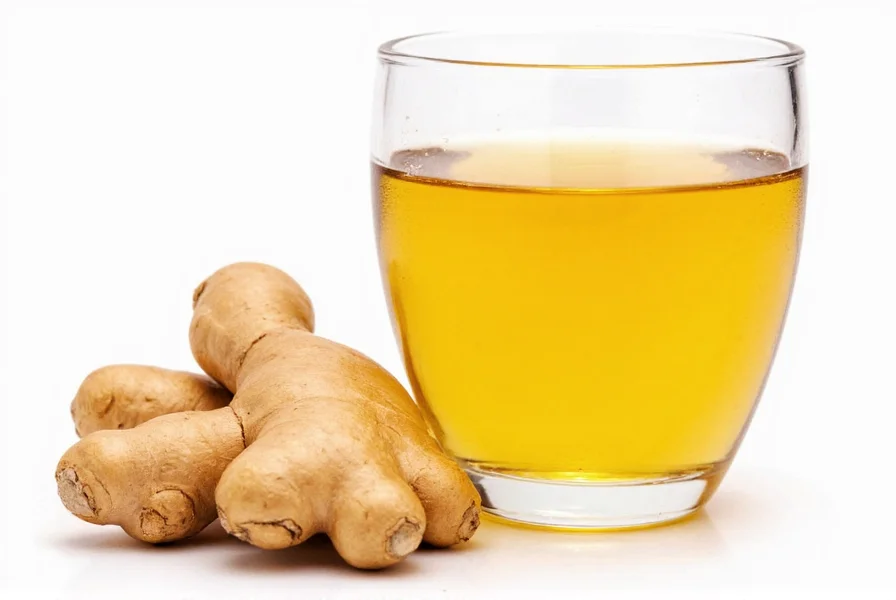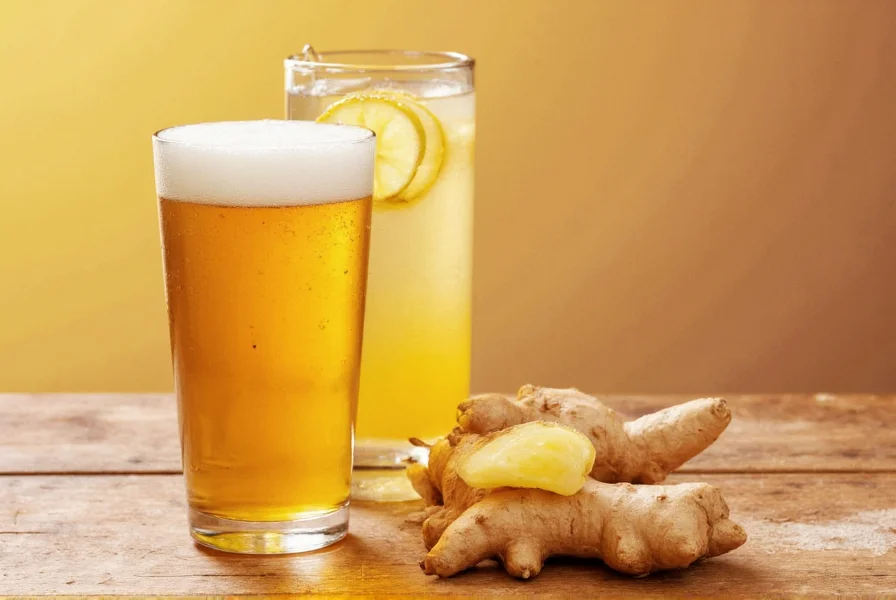When exploring the connection between ginger and ginger ale, it's essential to understand both components individually before examining their relationship. Ginger (Zingiber officinale) is a flowering plant whose rhizome, or underground stem, has been used for culinary and medicinal purposes for thousands of years across Asian, Indian, and Middle Eastern cultures.
The Botanical Basis: What Is Ginger?
Ginger contains bioactive compounds called gingerols and shogaols, which give it its characteristic pungent flavor and potential health properties. Fresh ginger root contains approximately 1-3% essential oils, with zingiberene being the primary aromatic compound. The concentration of these compounds varies based on growing conditions, harvest time, and processing methods.
Historical Evolution of Ginger Ale
Ginger ale originated in 19th century Ireland and Scotland as a fermented beverage made from ginger root, sugar, water, and a fermentation starter. This traditional preparation method created a naturally carbonated drink with a pronounced ginger bite. The "golden" or "dry" styles of ginger ale emerged later, with Canada Dry popularizing the golden style in the early 20th century.
Modern commercial production has evolved significantly. While craft and premium ginger ales often use substantial amounts of real ginger extract, many mass-market brands rely primarily on artificial flavorings to achieve the characteristic taste while reducing production costs. This distinction is crucial when considering does ginger ale contain real ginger in contemporary products.
Ginger Content in Commercial Ginger Ales
The amount of actual ginger in ginger ale varies dramatically between brands and product lines. Independent laboratory analyses have shown that:
| Ginger Ale Type | Approximate Ginger Content | Production Method |
|---|---|---|
| Craft/Boutique Brands | 0.5-2.0% ginger extract | Real ginger root steeped or fermented |
| Premium Commercial Brands | 0.1-0.5% ginger extract | Combination of natural and artificial flavors |
| Mass-Market Brands | <0.1% ginger compounds | Primarily artificial flavorings |
This variation explains why consumers searching for ginger ale with real ginger benefits should carefully examine ingredient lists. Products listing "ginger root extract" or "natural ginger flavor" higher in the ingredients typically contain more actual ginger than those where "natural flavors" appears without specificity.
Health Considerations of Ginger in Ginger Ale
The potential health benefits associated with ginger—such as supporting digestion and reducing nausea—are dose-dependent. Most scientific studies on ginger's effects use doses of 1-2 grams of fresh ginger or 500-1500 mg of standardized ginger extract.
When evaluating health benefits of ginger in ginger ale, consider that a standard 12-ounce serving of commercial ginger ale typically contains less than 50mg of actual ginger compounds—far below the amounts used in clinical studies. Those seeking therapeutic benefits would need to consume ginger in more concentrated forms.

Ginger Ale vs. Ginger Beer: Understanding the Difference
Many consumers confuse ginger ale and ginger beer, but they differ significantly in ginger content and production:
- Ginger beer traditionally undergoes fermentation with a "ginger beer plant" (a symbiotic culture), resulting in higher ginger concentration (typically 1-4%) and natural carbonation
- Ginger ale is generally a carbonated soft drink that may or may not contain significant ginger, with most commercial versions being artificially flavored
This distinction matters for those specifically searching for ginger beer vs ginger ale difference when making purchasing decisions based on ginger content.
Reading Labels for Authentic Ginger Content
When selecting ginger ale for its ginger properties, look for these indicators of genuine ginger content:
- "Ginger root extract" appearing in the first five ingredients
- Visible ginger pulp or sediment in craft varieties
- Spicy "bite" that lingers (artificial flavors often lack this characteristic)
- Products labeled "fermented" or "craft-brewed"
Be wary of products listing only "natural flavors" without specifying ginger, as this could represent minimal actual ginger content. Understanding how to identify real ginger in ginger ale requires careful label examination.

Conclusion: The Ginger-Ginger Ale Relationship
The connection between ginger and ginger ale remains fundamental despite modern production variations. While traditional ginger ale relied heavily on ginger root for both flavor and fermentation, contemporary interpretations range from authentic ginger-forward beverages to products using ginger primarily as a flavor concept. Consumers seeking the distinctive taste and potential benefits of ginger should look for craft or premium brands that transparently disclose their ginger content.
Does ginger ale actually contain real ginger?
Many commercial ginger ales contain minimal real ginger, often less than 0.1% ginger compounds. Craft and premium brands typically use 0.5-2.0% ginger extract, while mass-market varieties frequently rely on artificial flavorings. Check ingredient lists for "ginger root extract" to identify products with actual ginger content.
What's the difference between ginger ale and ginger beer?
Ginger beer traditionally contains higher ginger concentration (1-4%) and undergoes fermentation with a ginger beer plant, creating natural carbonation. Ginger ale is typically a carbonated soft drink with lower ginger content that may be artificially flavored. Craft ginger ales approach ginger beer in ginger intensity, but most commercial ginger ales are milder and less spicy.
Can ginger ale help with nausea like fresh ginger?
Most commercial ginger ales contain insufficient ginger compounds (typically less than 50mg per serving) to provide the nausea-relieving effects studied in clinical research, which use 500-1500mg of ginger extract. Those seeking therapeutic benefits for nausea should consider ginger supplements, fresh ginger, or craft ginger beers with verified high ginger content.
How can I tell if my ginger ale contains real ginger?
Check the ingredient list for "ginger root extract" appearing early in the ingredients. Authentic ginger-forward products often have a noticeable spicy bite that lingers, visible sediment in craft varieties, and may specify ginger content percentage. Mass-market brands listing only "natural flavors" typically contain minimal actual ginger.
Why do some ginger ales taste different from others?
The taste variation comes from differences in ginger content, processing methods, and additional flavorings. Traditional ginger ales use fermented ginger root extract creating a spicy, complex flavor. Modern versions often blend artificial ginger flavor with citrus notes and sweeteners, resulting in a milder, sweeter profile. The "golden" style has stronger ginger flavor than the more common "dry" style.











 浙公网安备
33010002000092号
浙公网安备
33010002000092号 浙B2-20120091-4
浙B2-20120091-4